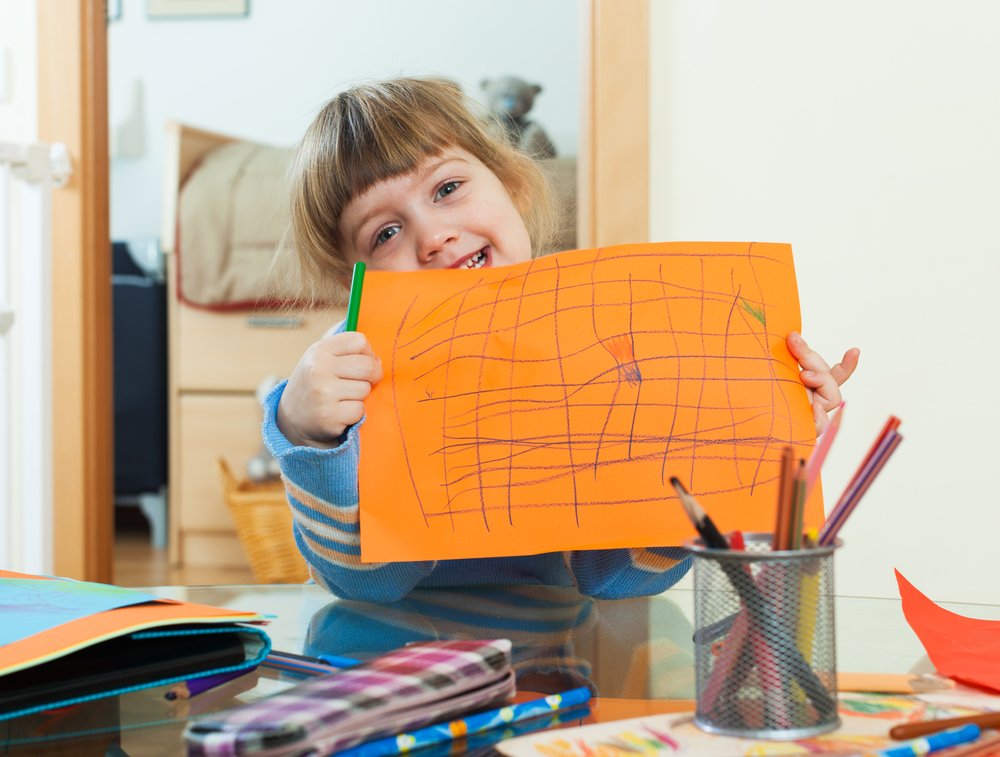Key points:
- Around 34 months, your child starts holding crayons with a more mature grip, preparing for writing.
- They plan their drawings, love copying shapes, and develop fine motor skills.
- Posture affects their drawing flow, and circles are a common theme in their artwork.
- They begin to recognize complex shapes, symbolize objects, and learn to write their name.
As we mentioned in PART 1 of this article, scribbling is one of the first steps your little one takes to understand writing and language. What started as random whole-arm movements has turned into fine traces of shapes and objects. At around 34 months your child will start holding the crayon or marker in a more mature way, finding their pencil grip for writing. They’ll start planning beforehand what they want to create in their drawings, and they’ll love copying and tracing shapes using different art materials and specific colors. As they broaden their repertoire of experiences, they’ll start learning more about the specific parts of written language.
Now that they have their writing grip down, your little one will love putting it to practice. You’ll see the have a good posture when drawing and how this affects the flow and pace of their scribbling. A lot of their drawings might consist of circles during this age. At first you might see irregular circles and lines on every direction, but as they practice their wrist and small finger movements, you’ll see a beautiful picture of the sun shining on their paper. At this stage they’ll love to incorporate other kinds of materials to their drawings. Playdough, paper strips, and paint are great for this. As they hold the marker, roll the playdough, and pastes paper strips, you’ll see them go from broad and controlled wrist movements to delicate actions done with their fingers. They’ll gain more strength on their muscles and control over the pressure they apply on the crayon. They’ll eventually go from shapes to more complex objects.
Remember that everything is linked. Since your little is now the conversationalist, they’ll want to explain more of what’s behind their drawings; their abstract thinking skills are also playing an important role at this stage. They’ll be more interested in complex shapes, like squares; they’ll start giving meaning to the lines on the paper and learn how they can represent something else, like a house. This is an important milestone since your child will begin naming all of their lines and marks and understand that real objects can be symbolized by them. By now they also understand the function of different body parts, they’ll be interested in drawing persons and telling stories about them. You’ll see that their fine motor skills start reflecting on their self-care skills as well. Their precise movements, muscle strength, and finger division will lead to the manipulation of buttons and soon shoelaces.
Their skills will develop enough for them to begin to understand the difference between pictures and writing. They’ll go from random scribbles to experimenting with letters. At first, they’ll make up some of their own because letters look like the shapes they’re familiar with, but eventually they’ll learn to write their own name. Research shows that children around 3-4 years old start acquiring name-writing skills. These will not only serve as an important part of their literacy development, but also for their use of oral and written language. From random to controlled movements, every scribble your little one makes will foster their fine motor development and reading and writing readiness for the years to come.








